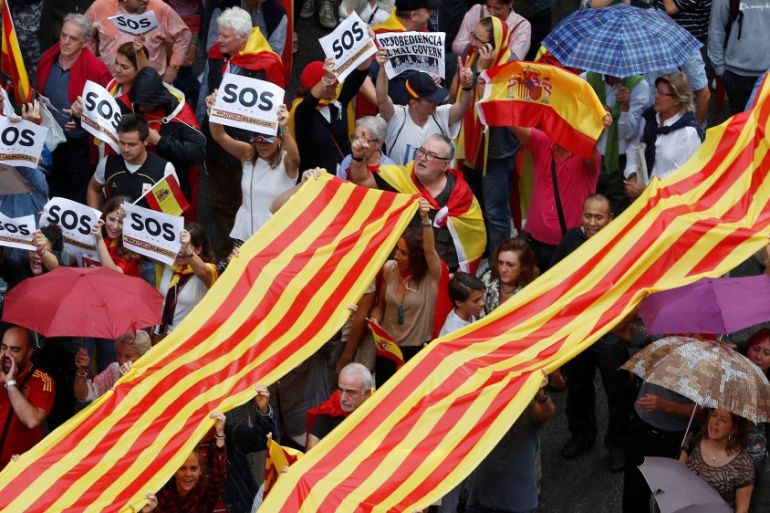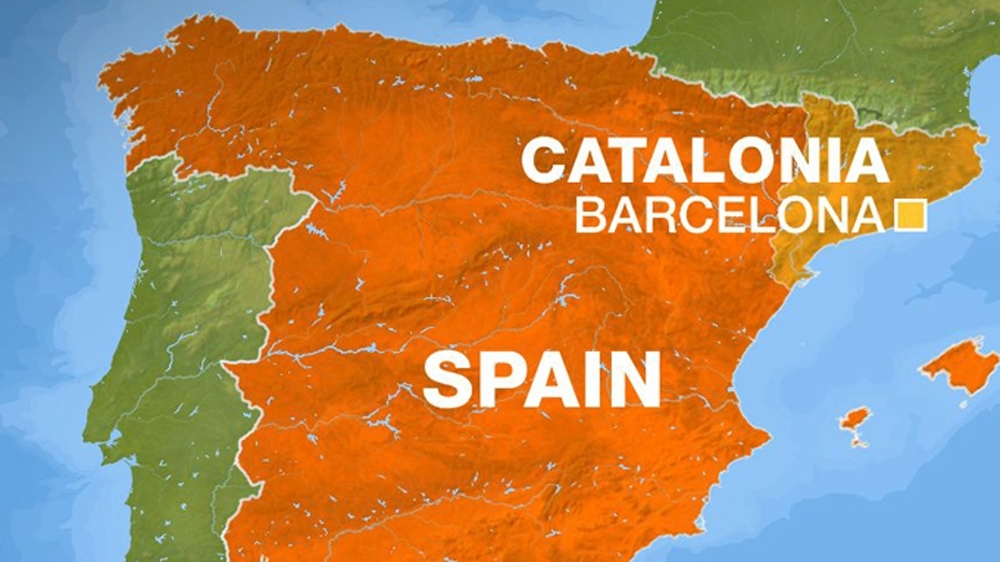Catalonia referendum: Who are the Catalans?
Inhabitants of the Catalan region number up to 7.5 million, accounting for 15 percent of Spain’s population.

The Catalans are the people who live in the “Paisos Catalans”, or Catalan Countries, which include Valencia, the Balearic Islands, parts of the Spanish region of Aragon, Roussillon in southeastern France and, Catalonia itself.
Sunday’s referendum does not cover the entire Catalan Countries. It is confined only to Catalonia, an area in northeastern Spain, which has a population of 7.5 million people. The area accounts for 15 percent of Spain’s population and 20 percent of its economic output.
Keep reading
list of 4 itemsLarge protests against Catalan amnesty deal in Madrid after PM sworn in
Thousands protest against Catalan amnesty in Spain
Spain’s Sanchez set to stay PM after amnesty deal with Catalan separatists
The Catalans have a distinct history, culture and language.
READ MORE: Catalonia independence referendum: All you need to know
Salvador Dali, Antoni Gaudi, Joan Miro, Ferran Adria and Pep Guardiola are among the most famous Spanish Catalans.
A defined region of Catalonia was first referenced in the 12th century, hundreds of years before the unification of Spain. Following the Nueva Plata decree of 1716, it came under the direct rule from Madrid.
Catalan autonomy has been a recurring theme throughout the country’s history.
In 1931, when Spain became a republic, Catalonia was given greater political autonomy within the confines of the state.
However, within a decade following the Spanish Civil War, the region’s autonomy was revoked by the military government of Francisco Franco.
During Franco’s rule from 1939-1975, Catalan culture was heavily suppressed. Symbols of Catalan identity such as the castells, or human towers, were prohibited and parents were forced to choose Spanish names for their children.
|
|
The Catalan language (which is also spoken in Valencia and the Balearic islands) was restricted, having been banned in public.
As democracy in Spain developed in the aftermath of Franco, Catalan autonomy re-emerged and flourished.
In 1979, a new Statute of Autonomy of Catalonia was issued, which restored the Catalan parliament. Elections for the 135-member body were held the following year, on March 20.
The region, which forms one of Spain’s 17 “autonomous communities”, has its own police force and powers over affairs such as education, healthcare and welfare.
There are also provisions in place to protect Catalan identity, including joint language status for Catalan and Castilian, and a law that requires teachers, doctors and public sector employees to use the Catalan language in their places of work.
However, a push for full independence has gathered pace in recent years, most notably since Spain’s 2008 debt crisis.
READ MORE: Independence referendum: How Catalans plan to vote
Pro-independence supporters claim Catalonia, which is one of Spain’s wealthiest regions, offers more financial support to Spain than it receives from the central government in Madrid.
Many view the region’s strong economy as an indicator that it would be viable as a sovereign state.
About 1.6 million people live in Barcelona, Catalonia’s capital, which is a major tourist destination.
Today’s vote is the region’s second referendum on independence in three years.
